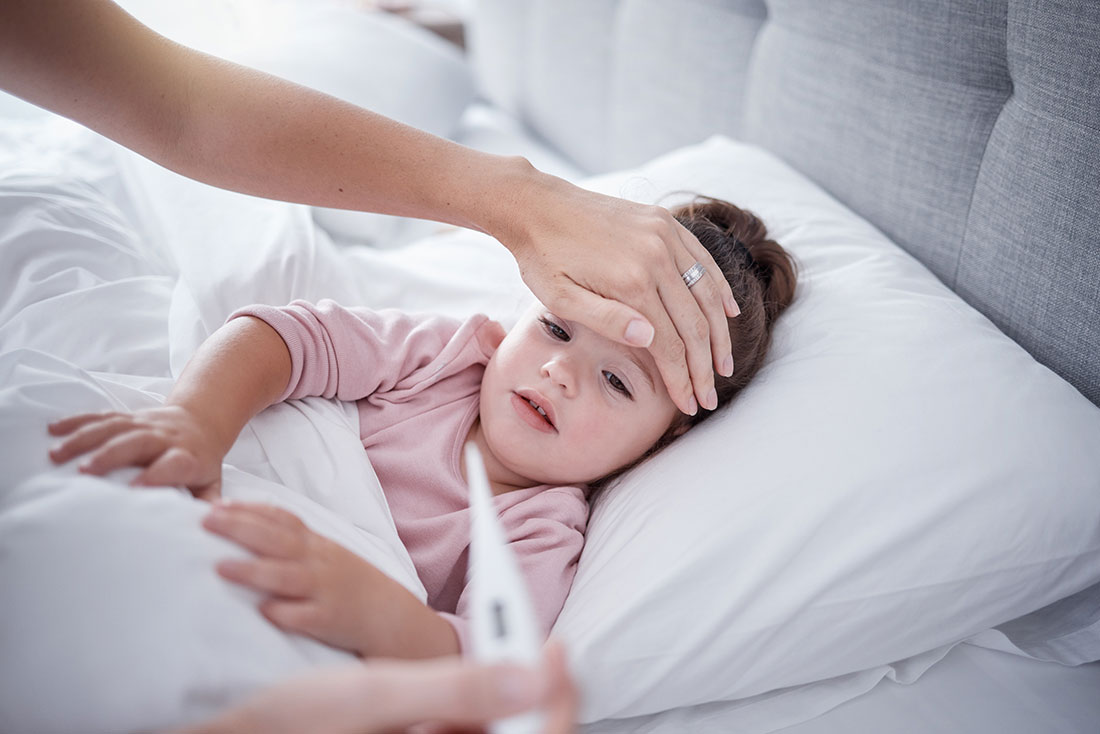
Fever is one of the most common signs that something is wrong with our health. Learn how to respond to it and when it indicates a serious problem in our guide.
What temperature indicates a fever in a child?
Fever is the body's natural response to infection. Normal body temperature is between 36 and 37 °C. Although a temperature of 37°C appears red on a thermometer, it does not necessarily indicate illness. In fact, a temperature up to 38°C is considered a subfebrile condition that does not require treatment. 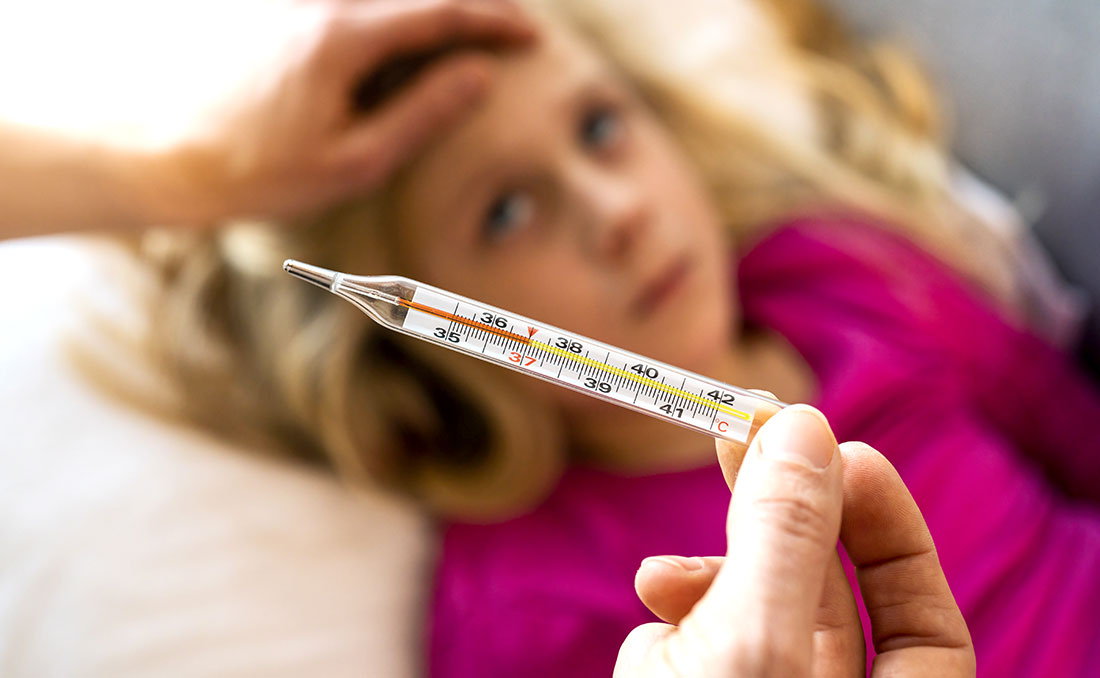
How to interpret a child's body temperature
36-37°C - Normal temperature. 37-38°C - Low-grade fever. Monitoring the child is recommended; medication may also be administered.
38-39°C - Fever. The body temperature should be lowered. 39-40°C - High fever. Seek medical attention immediately. Above 40°C - Very high fever. Seek medical attention immediately. How to lower a fever in a child
If your child's temperature exceeds 38 °C, it should be lowered. 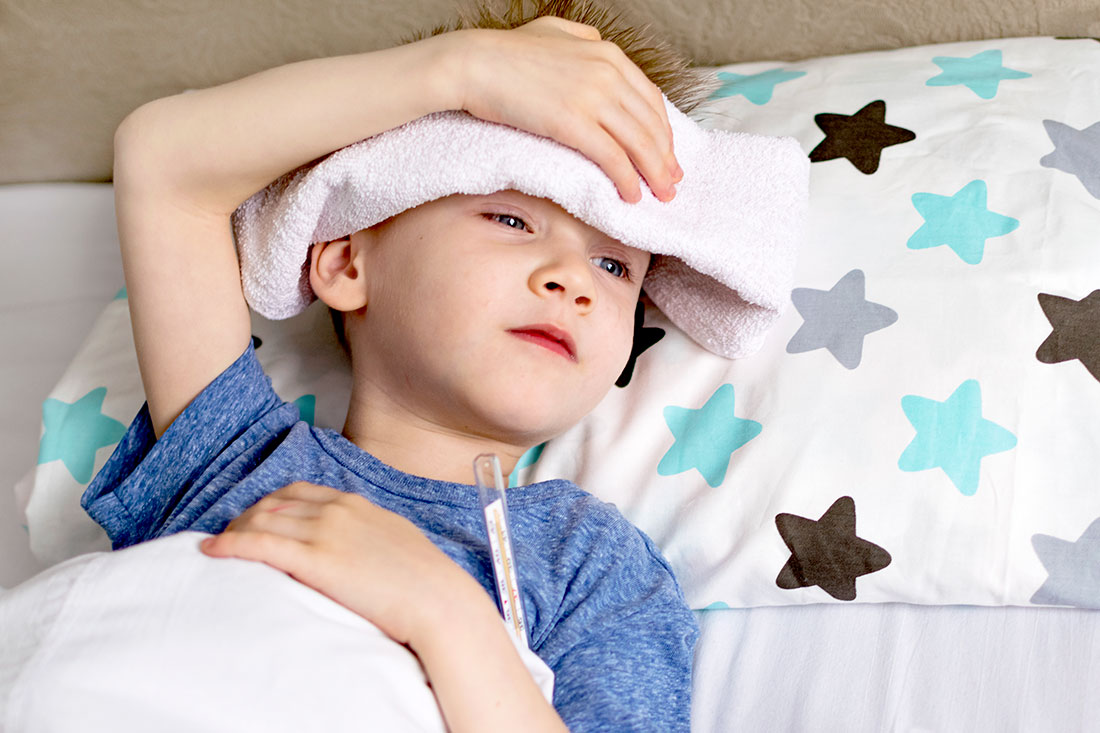
Ways to lower a fever in a child include:
- Administering antipyretic medications for children, which are available in pharmacies without a prescription
- Administration of antipyretic drugs in the form of suppositories in case of persistent high temperature - suppositories accelerate the reduction of fever
- Cold compresses for the forehead and neck
- A cooling, quick bath in water no more than 2°C lower than the child's body temperature
- If the temperature increases or persists despite medication, consult a doctor immediately or use a teleconsultation.
When should you take your child to the doctor?
A low-grade fever up to 38 °C does not require an urgent visit to a doctor, but it is indicated in several cases, e.g. in newborns or when other symptoms occur. Seek medical advice if:
- A fever has occurred in a child under 3 months of age
-
A high fever above 39°C occurred in a child between 3 and 6 months of age.
- In addition to fever, other disturbing symptoms occurred in older children
- The child's body temperature is above 40°C
- The temperature persists after 3 days of home treatment or the child's condition has worsened

See a doctor immediately if, apart from fever, other disturbing symptoms appear, such as:
- severe headaches
- difficulty breathing
- excessive sleepiness
- rash, spots and skin bruises
- stiff neck
- visual disturbances
- severe vomiting
- stool with blood
- severe abdominal pain
- convulsions lasting more than 10 minutes
How to care for a child with a fever?
If your little one has a low-grade fever or a low-grade fever, there's a chance they'll feel fine and be able to function normally. If you've decided to leave them at home, they can simply play, and the care doesn't have to be particularly unusual, for example, you don't have to force them to stay in bed. Check when your child should stay home. 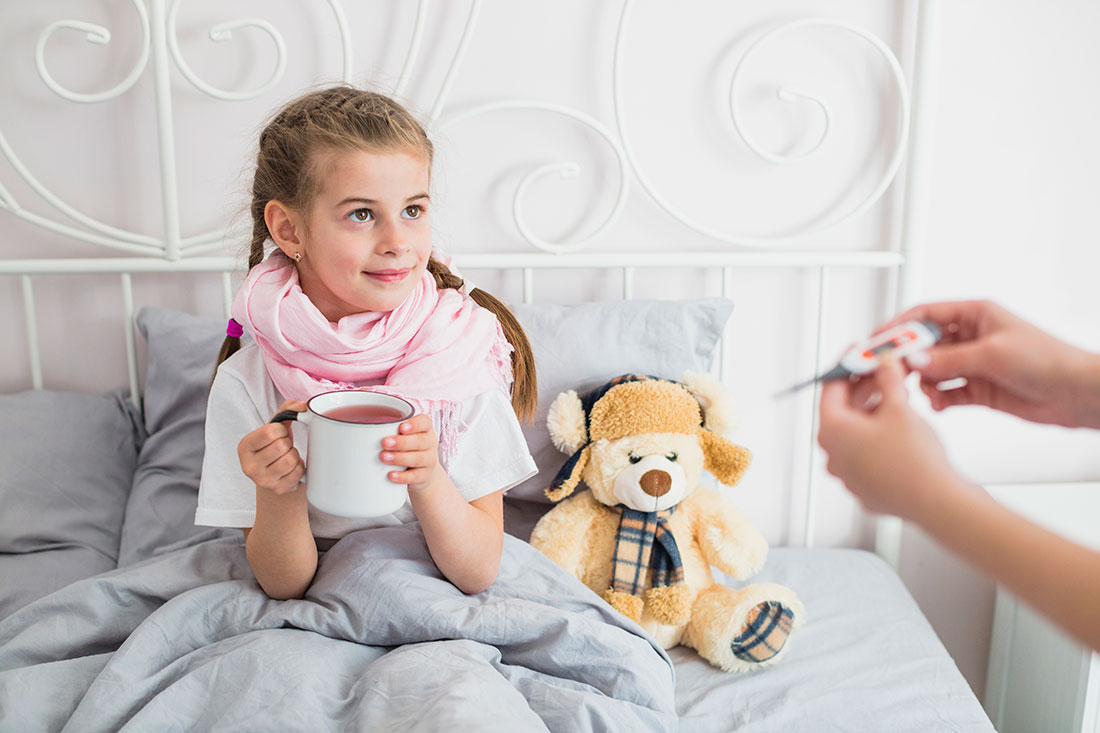 However, if the fever is high and other symptoms are present, it is worth taking care of your child by:
However, if the fever is high and other symptoms are present, it is worth taking care of your child by: - Leaving a child at home
- Administration of antipyretics and other medications prescribed by the doctor
- Providing your little one with a comfortable place to rest, the room should not be overheated
- Airing the room where the child is staying from time to time
- Giving water frequently to prevent dehydration
- Regularly checking whether the baby is not sweaty or in wet pajamas, and providing fresh, airy clothes
- In case of high fever, apply cold compresses
- Making time for your child more enjoyable, e.g. by reading a book or watching a cartoon together
- Monitoring your child's health at night
What are febrile seizures and how to treat them?
Febrile seizures may occur in 5% of children between the ages of 3 months and 5 years. They are caused by an abnormal response of the immature nervous system to a rapid rise in temperature and may occur at a temperature above 38.5 °C . What does a febrile seizure look like?
During a febrile seizure, several phases can be distinguished. Initially, the child loses consciousness, then the body stiffens or, in some cases, goes limp. The seizures last for approximately 10 minutes, after which the child becomes significantly drowsy. 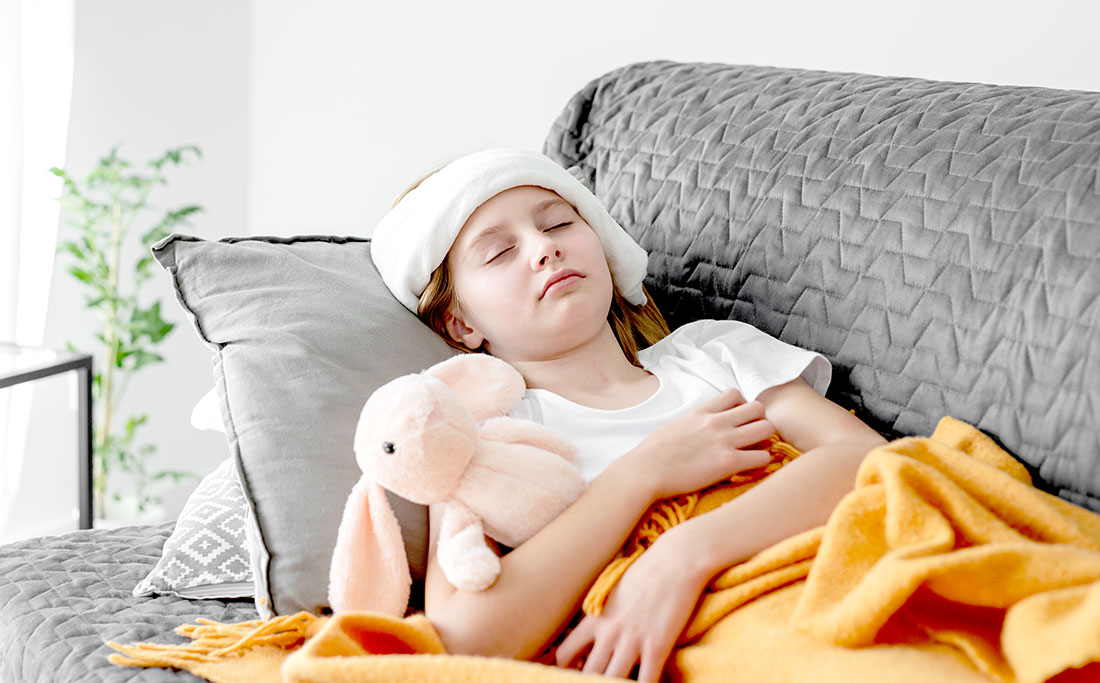
What to do if febrile seizures occur?
- Place your baby in a safe, side-lying position
- Once the seizures have stopped, give your child antipyretics.
- Give your child a cold compress
- Consult your doctor
- If the child does not regain consciousness or other disturbing symptoms occur, call for help.
What are the most common causes of fever in children?
Fever is most often caused by an infection, but it can also be caused by other factors. The most common causes of fever in children include:
- Viral respiratory infection
- Streptococcal angina
- Flu
- Three-day fever
- Pneumonia
- Otitis media,
- Urinary tract infection,
-
Gastroenteritis (enteritis)
- Chickenpox
- Infectious mononucleosis
- Teething
- Fever after vaccination
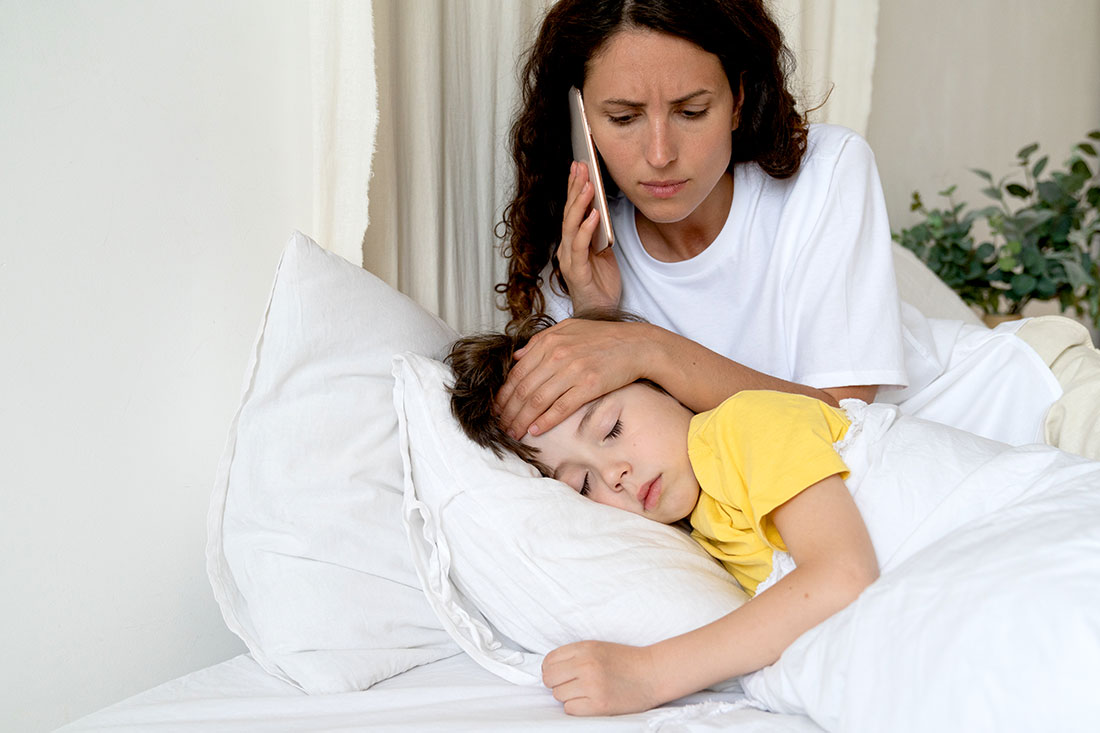
If you suspect your child has a more serious illness, contact your doctor without delay.



 See a doctor immediately if, apart from fever, other disturbing symptoms appear, such as:
See a doctor immediately if, apart from fever, other disturbing symptoms appear, such as: However, if the fever is high and other symptoms are present, it is worth taking care of your child by:
However, if the fever is high and other symptoms are present, it is worth taking care of your child by:
 If you suspect your child has a more serious illness, contact your doctor without delay.
If you suspect your child has a more serious illness, contact your doctor without delay.

Podziel się:
Pixel Coding for Kids - Download Images for Coding
How to dress a child during the transition period?